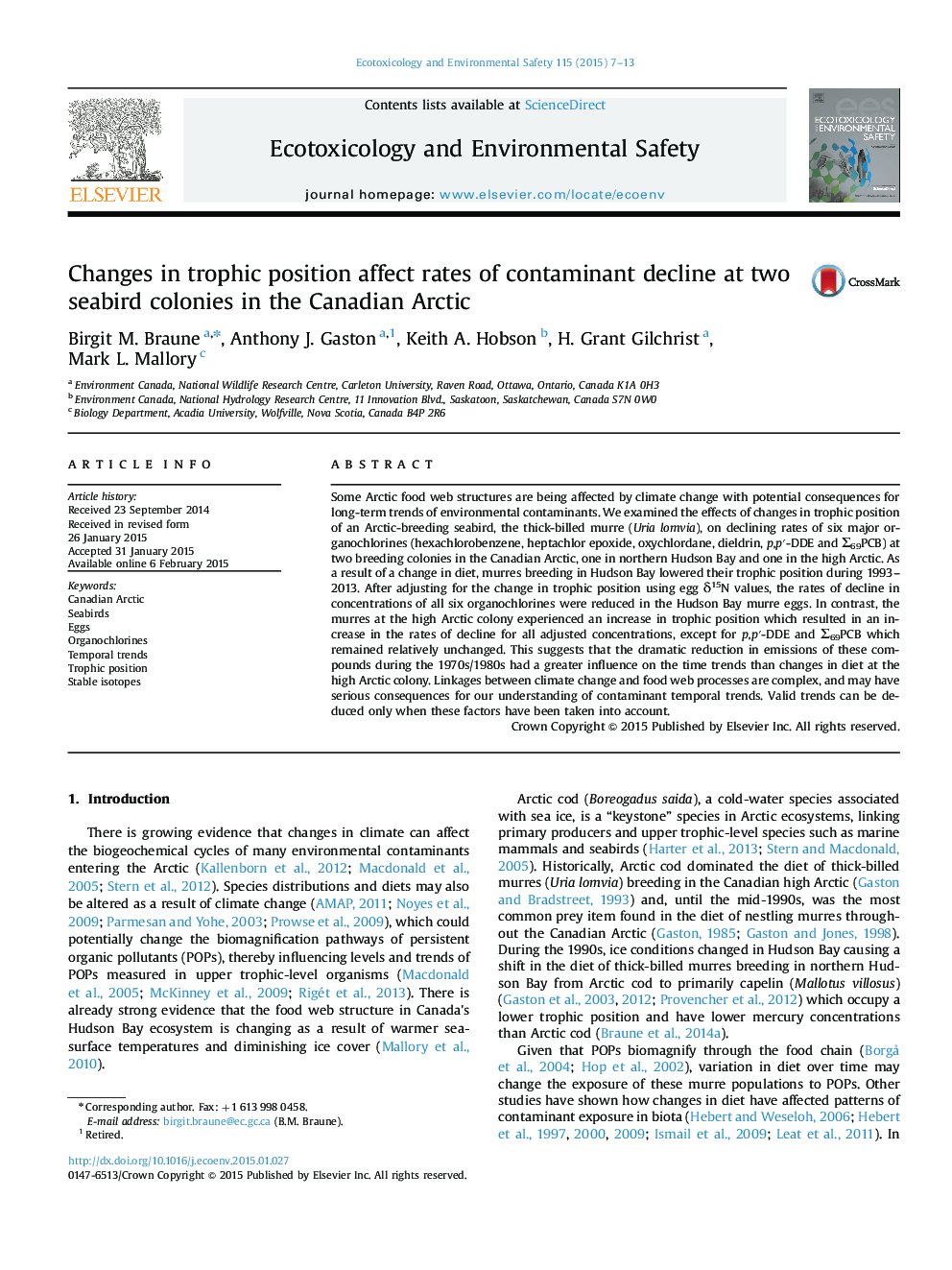| کد مقاله | کد نشریه | سال انتشار | مقاله انگلیسی | نسخه تمام متن |
|---|---|---|---|---|
| 4419746 | 1618948 | 2015 | 7 صفحه PDF | دانلود رایگان |
• Changes in trophic position of seabird affect rates of organochlorine decline.
• Adjustment for lowered trophic position reduced rates of organochlorine declines.
• Combined effect of reduced emissions and trophic change on temporal trends vary.
Some Arctic food web structures are being affected by climate change with potential consequences for long-term trends of environmental contaminants. We examined the effects of changes in trophic position of an Arctic-breeding seabird, the thick-billed murre (Uria lomvia), on declining rates of six major organochlorines (hexachlorobenzene, heptachlor epoxide, oxychlordane, dieldrin, p,p′-DDE and Σ69PCB) at two breeding colonies in the Canadian Arctic, one in northern Hudson Bay and one in the high Arctic. As a result of a change in diet, murres breeding in Hudson Bay lowered their trophic position during 1993–2013. After adjusting for the change in trophic position using egg δ15N values, the rates of decline in concentrations of all six organochlorines were reduced in the Hudson Bay murre eggs. In contrast, the murres at the high Arctic colony experienced an increase in trophic position which resulted in an increase in the rates of decline for all adjusted concentrations, except for p,p′-DDE and Σ69PCB which remained relatively unchanged. This suggests that the dramatic reduction in emissions of these compounds during the 1970s/1980s had a greater influence on the time trends than changes in diet at the high Arctic colony. Linkages between climate change and food web processes are complex, and may have serious consequences for our understanding of contaminant temporal trends. Valid trends can be deduced only when these factors have been taken into account.
Journal: Ecotoxicology and Environmental Safety - Volume 115, May 2015, Pages 7–13
